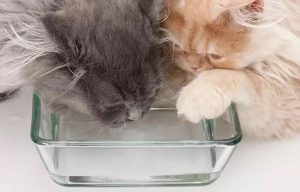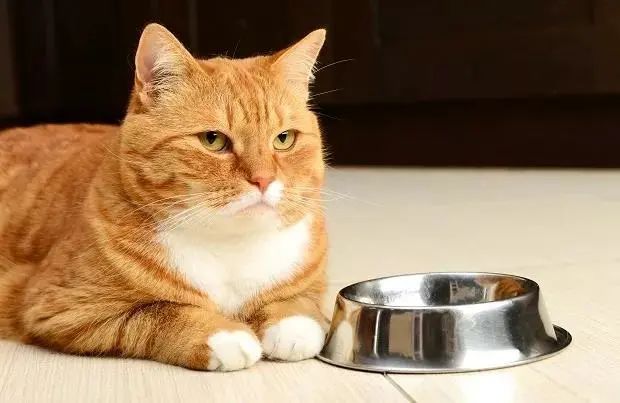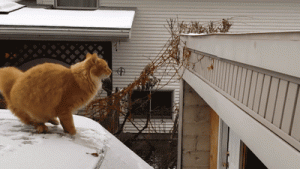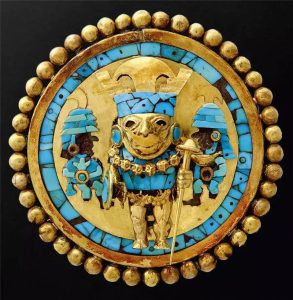Many cats share a quirky habit: they love dipping their paws in their water bowls. After a good paw wash, they’ll happily lick the water off… Sometimes, they even reach for their human’s cup! These cats, determined to share their foot-washing water with themselves, their fellow feline companions, and even their humans… are they just being mischievous? Is it playful behavior, or is there something more to it?
-
Primary Suspect: Whisker Fatigue
Whisker fatigue, commonly known as “whisker stress,” was once considered the leading cause behind behaviors like “cats being picky eaters,” “cats knocking food out of their bowls,” and “cats scooping water with their paws.” At the end of a cat’s whiskers are sensory devices called proprioceptors, which convert tactile signals into nerve impulses that reach the central nervous system. These whiskers help cats gather information about the texture, force, and distance of objects they touch. They also sense slight changes in the air to aid in hunting and help determine the layout of their surroundings in the dark. Simply put, cat whiskers are highly sensitive.Some behavioral scientists speculate that if a cat’s food or water bowl is too narrow—especially if the whiskers touch the sides of the bowl when drinking—the frequency of sensory input is too high, causing the cat stress and irritation. This discomfort may lead to the cat avoiding further pressure on its whiskers, resulting in them using their paws to scoop water.Although “whisker fatigue” has been questioned by some scientists and has not been definitively proven, many cats do seem to “return to normal” when given wider bowls. So, if your cat is displaying similar behavior, you can try: using a wider water dish or investing in a fountain-style water dispenser. This should help reduce paw-scooping behavior. It’s not just about drinking water, either. If your cat is showing signs like a decreased appetite, knocking food out of its dish, or leaving food unfinished, switching to a wide, shallow plate may also help.
-
It Could Be Poor Vision
Cats might also use their paws to measure water levels. Cats have poor color vision, and if the color of the water bowl doesn’t make the water line clear, some cats may use their paws to test where the water level is. To help, try using a brightly colored water bowl and make sure to top up the water regularly. Don’t wait until the bowl is nearly empty—maintaining a consistent water level will make it easier for your cat to find the water.

-
Because It’s Fun!
Swatting the water with their paws might simply be a fun game for your cat. The splashing and ripples could give them a small sense of enjoyment. But, this also points to a potential issue: your cat might be a little bored with their environment. Instead of splashing around in the water, why not provide some new toys or, better yet, play with them yourself?
-
The Water Bowl Position Might Be Uncomfortable
If the water bowl is placed too close to a wall or in a corner, your cat might need to tilt their head uncomfortably to drink. This could be why they occasionally use their paws to adjust the bowl to a better position. It’s not necessarily about cleaning their paws, but more about making the drinking experience more comfortable. To avoid this, ensure there’s plenty of space around the bowl when placing it.
-
They Might Be Expecting Flowing Water
Some cats are used to drinking from a flowing source, like an automatic water fountain or a running faucet. If you suddenly switch them to a still water bowl, they may feel uncomfortable. “Why isn’t the water flowing?” they might wonder. To make it move, they reach into the bowl with their paws. If your cat is accustomed to drinking flowing water, it’s a good idea to continue using an appropriate water dispenser to meet their needs.While it’s cute when cats play with water, it’s important to address the underlying reasons for this behavior. Frequent paw-dipping can be harmful, as it keeps their paws moist, creating a breeding ground for bacteria, especially in damp environments. Over time, this could lead to conditions like interdigital dermatitis. Additionally, dipping their paws in the water will introduce more dirt and hair into the bowl, which can make the water less appealing to the cat—and unpleasant for other cats, too. This could eventually lead to a decrease in water consumption.
In Conclusion.Whether it’s because the water level is too low or hard to reach, your cat is dissatisfied with the size or width of the bowl, the placement of the bowl, or the quality of the water itself—one thing is clear: your cat is simply not satisfied! But after reading today’s article, you should have a better understanding of how to improve the situation.





